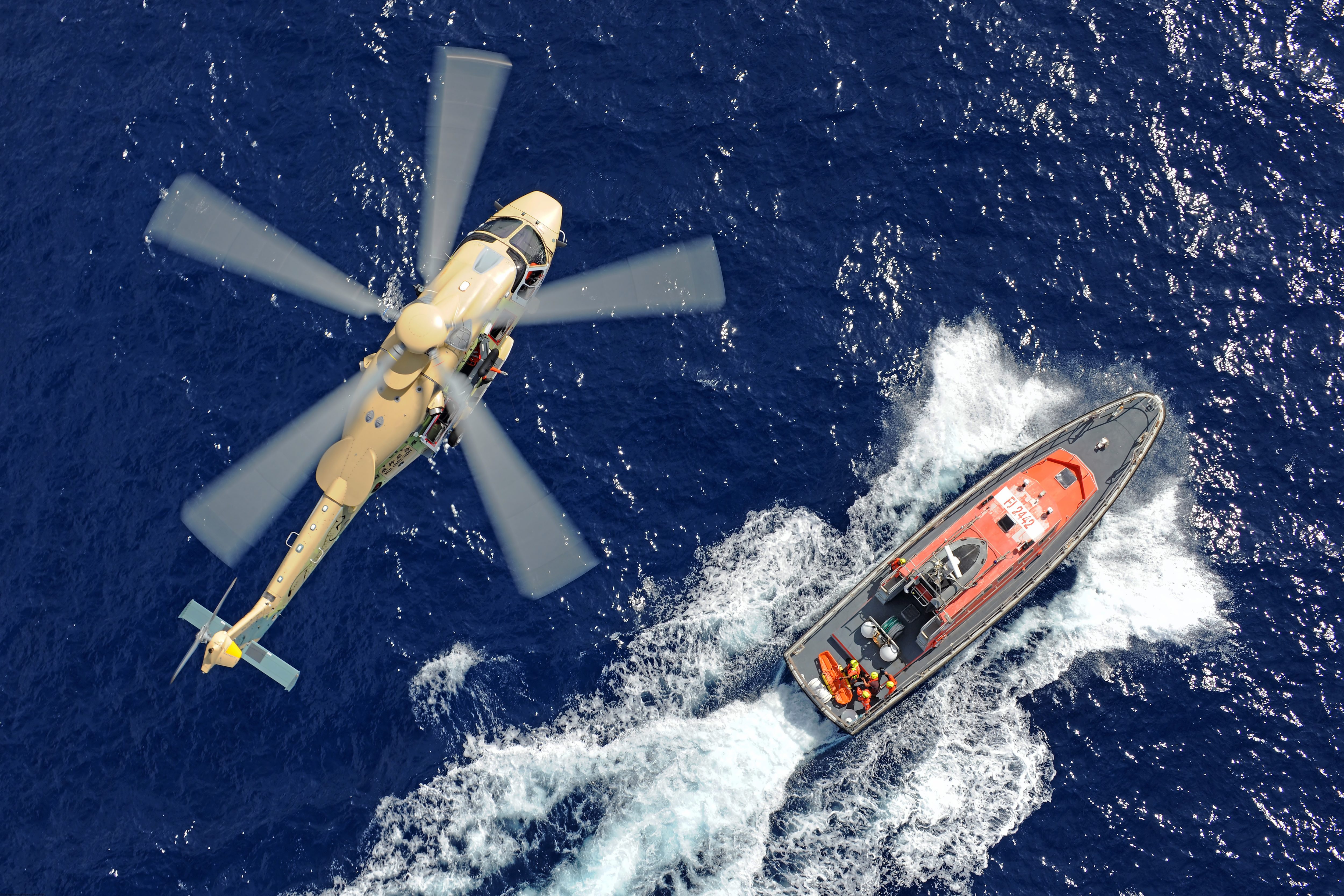Airbus Helicopters hopes to have its first H175 in a public services configuration in service by the middle of 2018 with Hong Kong’s Government Flying Service (GFS).

The GFS has ordered seven H175s and is the launch customer for the public services version, which can be used for search-and-rescue, emergency medical services, and law enforcement missions. Airbus is working to ensure the support services are in place to allow the aircraft to enter service as soon as it is delivered.
“We are on the final step to finalize the development of certification and the entry into service [of the public service configuration],” Marc Allongue, head of the H175 program, told journalists during a recent tour of the aircraft’s final assembly line in Marignane, France.
For the H175’s use as a search-and-rescue aircraft, Airbus has developed more than 70 options, with more than 20 cabin configurations available.
The public services version is the third that Airbus has developed for the H175, following offshore and VIP variations.
Airbus claims the 19 bookings the type received in 2017 represent 86 percent of orders for super medium aircraft in 2017, and that the H175 has now secured close to 55 percent of super medium orders over the last five years.
The global H175 fleet off 22 aircraft has now recorded 25,000 flight hours, with the fleet leader having reached close to 3,000 flight hours.
The aircraft is now operated in seven countries by seven operators, with the most recent addition being Thailand, where two VIP-configured aircraft were delivered last year.
The manufacturer delivered 11 H175s in 2017, and now has an order backlog of around 80 aircraft — mostly in the oil-and-gas configuration.
At the rate of output, new customers will have to wait almost two years for their aircraft to be delivered, but Allongue said he was pushing hard to increase production rate of the final assembly line in Marignane to around 30 aircraft a year. This will be achieved, in part, by changing the production method of completing the aircraft in a dock station, to moving them in a “flow method” through six assembly stations.
When production of the AC352 — the version of the aircraft produced in partnership with AVIC in China — is in full flow, that will add another 20 helicopters per year, for a total annual output of 50 H175s/AC352s.
Major landmarks for the program in 2017 included an expansion of the type’s maximum takeoff weight from 7.5 to 7.8 tonnes, the delivery of the first H175 with an anti-sand filter, the development of its Rig’N Fly mode (for automatic oil platform approaches), and certification of the type in Australia, Malaysia and Brazil.
The program’s main target for 2018 is to finalize the development of the public service version. “After that . . . we are beginning to think about what could be the next step for this machine,” said Allongue.
He said that with a capacity to carry 16 passengers on a 160-nautical-mile radius of action, the aircraft was already well sized for the market, but said the company would be having internal discussions about potential enhancements to the type.
“Engine power, rotor diameter… we have several possibilities to increase the maximum takeoff weight while keeping the overall good compromise of the machine,” said Allongue. “If you are pushing too far, then you are in the heavy segment and you lose the benefits of the super medium.”









